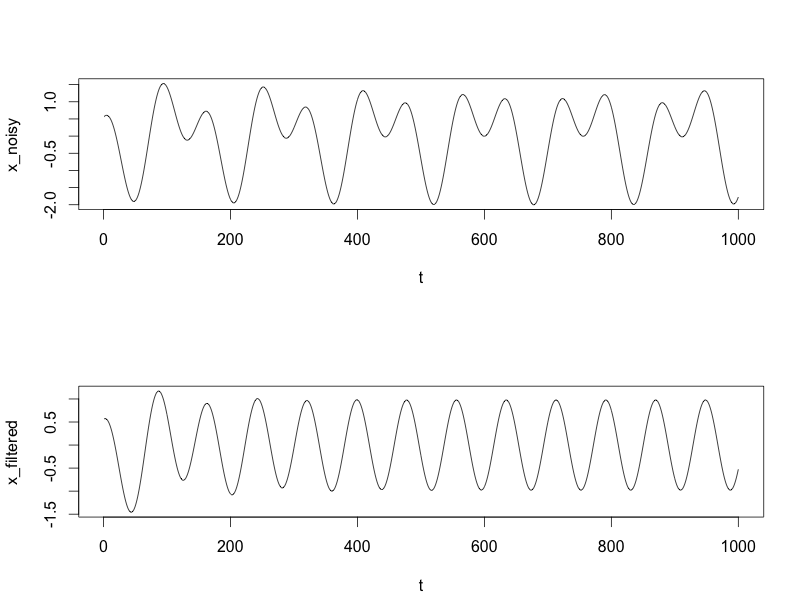Please note that the AC frequency is precisely 50.0hz. Sampling rate is 44100. C-code below.
How to use it:
You can compile it using any C compiler,
and your program.
How to integrate it:
Load dwData with the first samples from your file 882 samples at a time (or any with silence on it).
Call spamp() with arguments. It will modify pamp=… short global value.
Call sphis() with arguments. It will modify phis=… float global value.
Call rs() with same arguments. It will return dwDataOut[] shorts with cleaned signal.
Save or use dwDataOut samples.
Advance the next 882 samples and repeat the algorithm.
Precautions:
Neither of the procedures has verification algorithms implemented. You have to implement it yourself.
C Code Only Below
//global variables
short pdc=0;//N/A
short pamp=2643;//amplitude [short]
float phis=71.00000;//degrees
float pf=1.57080;//radians
////////////////////////////////////////////////////////////////////////
//
// remove 50hz humming
// modifies the signal to remove the effect of a 50hz hum.
// uses global vars. (pamp, phis, pdc) which are modified by
// functions (spamp, sphis, sdc)
////////////////////////////////////////////////////////////////////////
void rs(short* dwData, short* dwDataOut, DWORD dwLength){
pf=2*50*PI/180.0f*90/100.0f;
float omegaf=pf/(float)dwLength*4.0f;
DWORD dwi;
float fu;
for(dwi=0;dwi<dwLength;dwi++){
fu=omegaf*dwi+phis*PI/180.0f;
while(fu>=2*PI)
fu-=2*PI;
dwDataOut[dwi]=short(dwData[dwi]*bEnableAntiPhase-1/sqrt(2.0f)*pamp*sin(fu)-pdc*0);
};
phis+=pf*180/PI*4.0f;
while(phis>=360.0f)
phis-=360;
}
////////////////////////////////////////////////////////////////////////
//
// search-for-amplitude
// searches for maximum amplitude in a vector
// of values. Uses findmin & findmax functions
//
////////////////////////////////////////////////////////////////////////
void spamp(short* dwData, DWORD dwLength, short* iValueOut){
short pleft=0;
short pright=0;
DWORD dwm=0;
DWORD dwi=0;
TCHAR sztemp[MAX_PATH];
if (dwData[1]){
findmax(dwData, dwLength, &dwm);
findmin(dwData, dwLength, &dwi);
iValueOut[0]=(dwData[dwm]-dwData[dwi])/2.0f;
}else MessageBox(cvar.get_hwnd(), “semnal nul”, “titlu spamp”, 0);
}
////////////////////////////////////////////////////////////////////////
//
// search-for-phase
// compares any signal with a sinusoid of 50hz (if dwLength==882)
// and finds out the phase so that by composing them altogether
// you get the cleaned signal.
////////////////////////////////////////////////////////////////////////
void sphis(short* dwData, DWORD dwLength, float* fValueOut){
short* dwDataOut=(short*)calloc(1000, sizeof(short*));
short* dwValueLeft=(short*)calloc(1000, sizeof(short*));
short* dwValueRight=(short*)calloc(1000, sizeof(short*));
short* dwValueC=(short*)calloc(1000, sizeof(short*));
short pleft=0;
short pright=0;
DWORD iLeft=0;
DWORD iRight=0;
DWORD dwm;
float phisOld=phis;
for(dwm=0;dwm<360;dwm++){
phis=dwm;
rs(dwData, dwDataOut, dwLength);
cpower(dwDataOut, dwLength, &pleft, &pright);
dwValueLeft[dwm]=pleft;
dwValueRight[dwm]=pright;
dwValueC[dwm]=(short)dwm;
};
phis=phisOld;
findmin(dwValueLeft, dwm, &iLeft);
findmax(dwValueRight, dwm, &iRight);
fValueOut[0]=(dwValueC[iLeft]+dwValueC[iRight])/2.0f
free(dwDataOut);
free(dwValueLeft);
free(dwValueRight);
free(dwValueC);
}
////////////////////////////////////////////////////////////////////////
//
// integrate by portions the amplitudes in a buffer (positive plus negative)
//
////////////////////////////////////////////////////////////////////////
void cpower(short* dwData, DWORD dwLength, short* pleft, short* pright){
DWORD dwi;
DWORD dwl=0;
DWORD dwr=0;
long cpl=0;
long cpr=0;
for (dwi=0;dwi<dwLength;dwi++)
if (dwData[dwi]>=0){
cpl+=dwData[dwi];
dwl++;
}else{
cpr+=(dwData[dwi]);
dwr++;
};
pleft[0]=(short)(cpl/(float)(dwl+1*0));
pright[0]=(short)(cpr/(float)(dwr+0*1));
}
void findmax(short* dwData, DWORD dwLength, DWORD* dwIndex){
DWORD dwi=0;
short dwValue=0-32768;//plec din minim
if (dwLength==0){
MessageBox(cvar.get_hwnd(), "dwLength==0", "titlu findmax", 0);
return;
};
for(dwi=0;dwi<dwLength;dwi++)
if (dwData[dwi]>=dwValue){
dwValue=dwData[dwi];
dwIndex[0]=dwi;
}else{
dwValue=dwData[dwIndex[0]];
};
}
void findmin(short* dwData, DWORD dwLength, DWORD* dwIndex){
DWORD dwi;
short dwValue=32767;
for(dwi=0;dwi<dwLength;dwi++)
if (dwData[dwi]<dwValue){
dwValue=dwData[dwi];
dwIndex[0]=dwi;
}else{
dwValue=dwData[dwIndex[0]];
};
}

